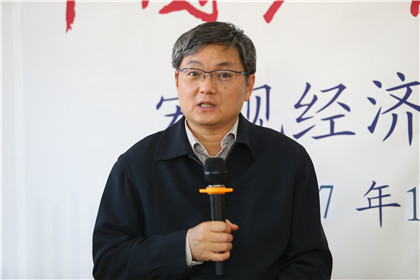 Research Update
Research Update
18
DecOn December 16, 2017, National Academy of Development and Strategy (NADS), School of Economics of Renmin University of China (RUC), jointly with China Chengxin Credit Management Co., Ltd., held the Workshop on Monthly Macroeconomic Data under “China Marcoeconomic Forum” at RUC. The workshop analyzed and interpreted the macroeconomic data of 2017 Nov.

RUC Vice President and Executive Dean of NADS Liu Yuanchun, Research Fellow of Chinese Academy of International Trade and Economic Cooperation, MOFCOM, Mei Xinyu, Deputy General Manager of Dongxing Securities Yin Guohong, Director and General Manager of Caixin Insight Zhong Zhengsheng and Co-President of Institute of Economic Research of RUC Yang Ruilong, attended the seminar.

Yang Ruilong moderated this seminar.
Fan Zhiyong, research fellow of NADS and Deputy Professor at School of Economics of RUC delivered an analysis report on monthly macroeconomic data on behalf of the task force. According to the Report, November's data showed that China's macroeconomy development has entered into stable stage, with risks of further decline reduced, but it is unlikely to realize fast rebound. The recovery of private investment is the precondition and guarantee for the macroeconomic stability. Supply-side reforms such as de-capacity and environmental strengthening have, to a certain extent, pushed up the prices of upstream products, helped improve the profits of upstream enterprises and accelerated de-leveraging. The high level of November PPI shows that further room for growth may have narrowed down; CPI is still in the stage of price easing, little rising pressure has to be faced in the short term. The leverage ratio of non-financial companies have begun to stabilize, but the large amount of deposits it held increased the cost of capital utilization, resulting in distorted leverage. The RMB exchange rate and capital cross-border flows have been stabilizing. The impact of the Federal Reserve's lifting interest rates and "shrinking chart" on China's economy are generally manageable.
The participants reviewed and commented on the macroeconomic data and analysis reports in November, exchanged brilliant ideas and put forward specific policy suggestions.